Vikings have been enjoying the spotlight in recent years—as I’ve previously discussed in a couple of articles focused on retellings of the Norse myths and novels inspired by the sagas, we’re seeing everything from full-blown fantasy with loose Viking-esque trappings to historically grounded fiction on both page and screen, all with connections to the milieu and mythos of the old Northlands. With so many depictions of kings, queens, gods, goddesses, adventurers, raiders, warriors, sorcerers, witches, valkyries, shield-maidens, and berserkers out there, it’d be fair to wonder which ones have made an honest effort at accurate representations and which ones have felt a little less constrained by an urge to conform to the known history and belief systems of the people in question.
This article isn’t an assessment of the inconsistent reliance on the existing factual knowledge base about Vikings in the world of entertainment. Rather, it’s intended as a kind of starter kit for anyone who’s enjoyed any of the various Viking-themed offerings in recent years and who might like to gain a better understanding of who these people really were, how they lived, and what they believed (and what we in the present day actually know and don’t know about all of that).
Sometimes a general sense of a time and place and culture can be gleamed from fictitious entertainment, but fictitious entertainment can also be incredibly misleading (the History channel’s Vikings and its Netflix-produced sequel, Vikings: Valhalla are probably the biggest culprits guilty of this, at least among recent offerings).
We also all know that non-fiction books can sometimes be as boring as Helheim (which is much more boring than Hell, since it’s a drab and dreary place full of docile dead people where nothing much happens until Ragnarök finally rolls around). It all depends on the writer and whether they have an engaging writing style, or if they instead suck more blood out of their given subject than a Transylvanian vampire feasting on a 19th-century English belle. The nonfiction titles presented here provide a good overview of the topic of “Vikings” from a variety of angles, and all share these qualities in common: they are well-written and easy-to-get-into.
Beyond the Northlands: Viking Voyages and the Old Norse Sagas by Eleanor Rosamund Barraclough
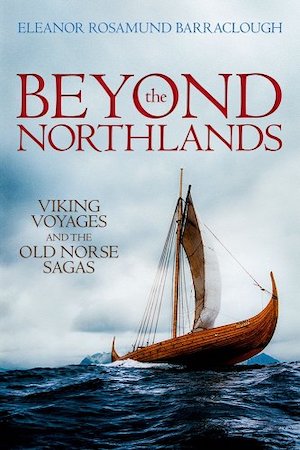
Beyond the Northlands: Viking Voyages and the Old Norse Sagas takes readers on a journey through the world that the Vikings inhabited as recorded in the Icelandic sagas. As such, it’s part travelogue/part history/part Icelandic saga overview, which is just a fun mix. Eleanor Rosamund Barraclough, who teaches environmental history at Bath Spa University and has presented a number of historical topics for BBC Radio, provides vivid descriptions of what many Viking sites look like now in the present context of the 21st century and explains effectively how they connect back to the narratives found in the old sagas and their associated history. With destinations ranging from L’Anse aux Meadows in Newfoundland to the sprawling metropolis of Istanbul, the book is an excellent reading journey, and also the only one on this list to include a large number of color photographs and illustrations.
Song of the Vikings: Snorri and the Making of the Norse Myths by Nancy Marie Brown
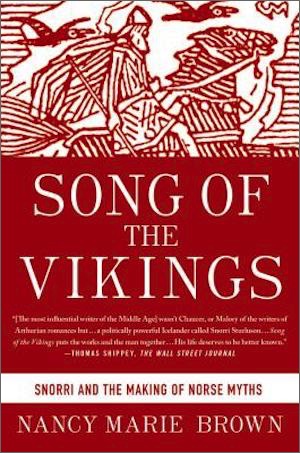
Song of the Vikings is basically narrative non-fiction in the form of a biography about Snorri Sturluson, the man who wrote the Prose Edda (one of the foremost sources of Norse mythology) as well as the Heimskringla and probably Egil’s Saga. As such, this book is not technically focused on the Viking Age—it’s focused on the time period afterwards—but often refers us back to the Viking Age when the old religion reigned and the heroes and outcasts of the Icelandic sagas walked the land.
While the book effectively weaves these different threads together into a very readable and compelling whole, it should be noted that Nancy Marie Brown, a former science writer who has released several non-fiction books about the Vikings and Iceland, introduces a fair amount of conjecture to fill in the gaps in what we know about Snorri’s influences. That said, the book is highly entertaining, and provides a good introduction to the myths and basic aspects of Viking Age society in its telling of the tumultuous life story of the single most important literary figure related to the whole Viking thing.
Gods and Myths of Northern Europe by H.R. Ellis Davidson

This is a classic text and a deep dive into, well, as its title states—the gods and myths of Northern Europe. The book covers everything ranging from the survival and validity of the sources to short recaps of the myths themselves to in-depth descriptions of the gods and goddesses, the customs associated with these deities, and their presence in the historic record. Essentially, Gods and Myths of Northern Europe is a one-stop shop for the religious and spiritual side of pre-Christian Viking history (and earlier), provided by a preeminent 20th-century scholar. As such, the prose is denser than the other titles on this list, but still clear and accessible by non-fiction standards. The book is presented in an easily readable chapter-based format—as opposed to a more dictionary-like or encyclopedia-style format, which tend to be fairly common among books focused on this topic—and that may or may not be a beneficial thing, depending on what type of resource you’re looking for.
Northmen: The Viking Saga AD 793-1241 by John Haywood
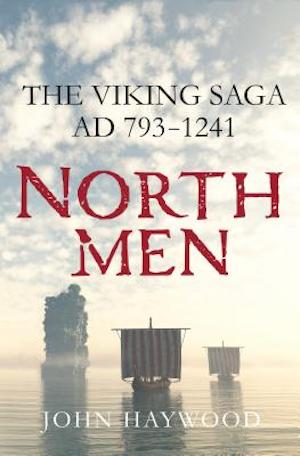
This is the one standard history book on this list. There are many, many standard history books about the Vikings—books that cover the broad time period and focus predominately on who the Vikings were and what they did in that time. Haywood is a Fellow of the Royal Historical Society in the United Kingdom, and he has written many other books about the Vikings as well as other topics related to ancient and medieval history. Northmen: The Viking Saga AD 793-1241 is one of the more recent books to address Viking history (and consequently contains mostly up-to-date information); it’s also one of the most engaging and readable. If you’re looking for a basic who-what-when type of history of the Vikings, this book is a great place to start.
Children of Ash and Elm: A History of the Vikings by Neil Price
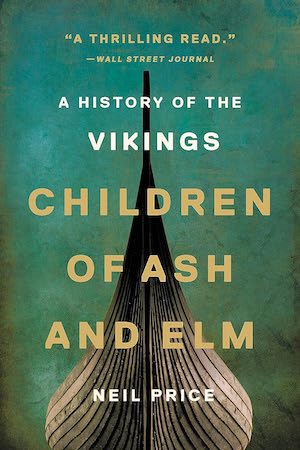
Children of Ash and Elm: A History of the Vikings will certainly be the most immediately recognizable book on this list for most people; it is a #1 New York Times bestseller after all, and rightfully so. Neil Price, an archaeologist at Uppsala University in Sweden and consultant to big-budget productions such as The Northman, as well as a contributor to the Grimfrost Viking YouTube channel, leads readers on a very engaging journey through the cultural world of the Vikings. And that’s the key defining element of this book—it is more of a cultural overview than the who-what-when standard sort of history that we find in John Haywood’s book, for example. The subtitle of Children of Ash and Elm: A History of the Vikings is a little misleading in that sense; the book is less about the attack on Lindisfarne in 793 or the invasion of England or the conquest of Normandy than it is about the customs and lifestyles of the Scandinavians during the Viking Age. This is the book to read if you want to get into the Scandinavian headspace of the Viking Age—what these people believed, how they acted, how they dressed, how they dealt with the dead, etc.
Rowdy Geirsson is the author of The Scandinavian Aggressors and translator of The Impudent Edda—now available for pre-order, publishing on November 22, 2023. His writing has appeared in McSweeney’s, Metal Sucks, Scandinavian Review, the Sons of Norway’s Viking Magazine, and is forthcoming in Medieval World: Culture and Conflict. He can be found skulking in the abyss at Twitter (@RGeirsson), Instagram (@rowdygeirsson), and Bluesky (@rgeirsson).














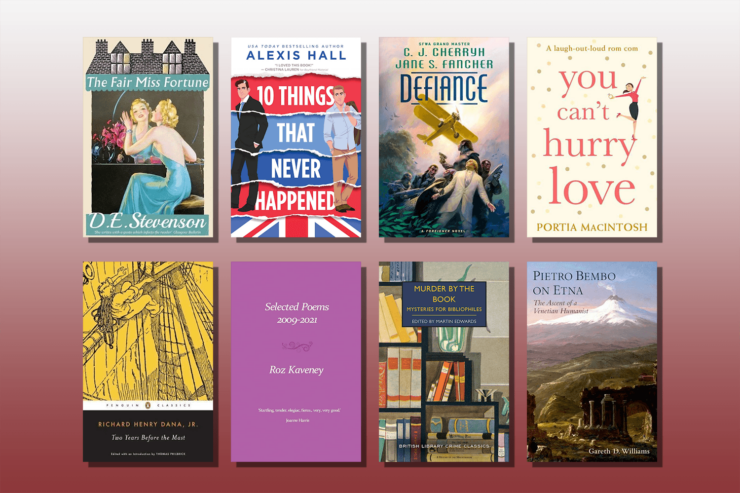
Sagas of the Icelanders. Seriously how do you leave that off?
Laughing Shall I Die, by Tom Shippey, is the best non-fiction book on the Vikings I’ve read.
Nancy Marie Brown’s The Far Traveler: Voyages of a Viking Woman focuses on Gudrid Thorbjarnardottir, who lived in Iceland and Greenland, is said to have been been part of the Vinland settlement, and as an older woman left her farm in Iceland and made a pilgrimage to Rome. The book’s discussion of the Icelandic sagas and the archaeology done at Viking sites is woven around Gudrid’s story.
Can also recommend “River Kings” by Cat Jarman!
By all means, I’m with @1 MCY that you just gotta start with Sagas of the Icelanders. Another great look at primary sources is The Viking Age: A Reader, edited by Somerville and McDonald. Kirsten Seaver’s brilliant The Frozen Echo pulls from archaeology as well to develop the Viking sphere of Greenland and the Western Atlantic.
These books are all easily accessible and readable, and rich with the immediacy of the time and place.
My first exposure to a comprehensive history of the Vikings was Gwyn Jones’ A History of the Vikings, which I found quite readable despite (or *because* of) the voluminous footnotes in sections.
My own copy is dated 1973, probably a reprint of the original 1968 publication. The extant 2nd edition is listed both new and used; despite being published in 2001, it seems to still be in print from the publisher, Oxford University Press.
Please allow me to offer a couple of ringing endorsements to books mentioned above:
H. R. Ellis Davidson’s “Gods and Myths of Northern Europe” is an outstanding work of scholarship. I first read it some fifty years and, as the well thumbed copy on my shelves can attest, several times since.
“Laughing Shall I Die” by Tom Shippey (as mentioned by Skallagrimsen at #2) is excellent. How good is it? Well, I read a library copy and then went out and bought my own.